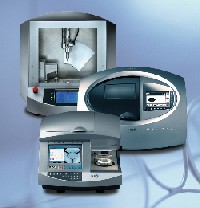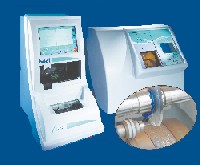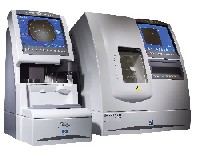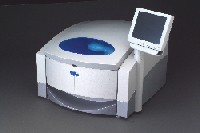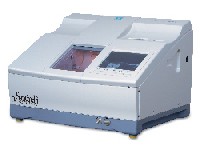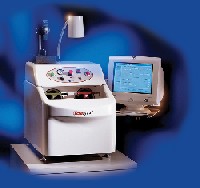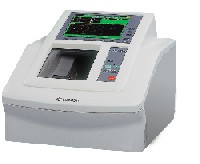Consider this scenario: Your dispensary offers a large selection of frames, and you offer patients a variety of lens options. Patients are impressed because they like the way you care for them and the materials you can offer to them.
You can maintain this good impression because these factors are in your control. But, once your patients order glasses from your dispensary and you send the orders to an outside lab, you cannot be certain of the quality of the finished product. Maintaining your good impression is now outside your control.
How do you ease your concerns about a potential job-gone-bad and disappointed patient? An in-office finishing lab can help quell your uneasiness, and it can offer several advantages to both your patients and your practice. Below, your colleagues discuss these advantages.
Quality Control
Putting total faith in an outside lab leaves a practice vulnerable to quality control problems, says optometrist Neil Gailmard, a practice management consultant in Sarasota, Fla. Low-quality eyeglasses, in turn, can lead to disappointed patients, he says.
You can prevent this scenario by making eyeglasses in your office. Having an in-office finishing lab allows us to monitor our quality of work, says optometrist Steven Reto, of West Chester, Pa. We require multiple checks to ensure that the final product meets the necessary requirements for outstanding quality, he says.
Specifically, Dr. Reto says, both the lab and retail opticians perform these checks before dispensing eyeglasses. By contrast, multiple quality checks cannot be guaranteed in an outside lab.
One caveat: In-office finishing labs produce quality products if you control the quality, says optometrist Peter Shaw-McMinn, of Southern California. That depends, in part, on who does the work. If you hire new lab personnel, the quality of glasses produced may be poorer while they are learning, he says.
Be sure you understand how to do the lab work yourself. If your lab optician is absent or leaves the practice, you may have to do the work, Dr. Shaw-McMinn says.
Convenience
In-office finishing labs can allow patients to receive their glasses the same day they order them. This convenience can give your practice an advantage over practices that cannot provide this service. If O.D.s want to prevent eyeglass sales from walking out the door and generate repeat business and referrals, they must compete on issues such as convenience, speed and service, Dr. Gailmard says.
Being able to dispense a pair of glasses the same day will also prevent patients from wanting to shop around in anticipation of a better deal elsewhere, Dr. Reto adds.
Patients may appreciate the convenience of an in-office finishing
lab for different reasons. Those who have busy lives will appreciate not having to wait long for their glasses. The main convenience in-office finishing labs offer is that jobs can be completed while the patient waits, Dr. Shaw-McMinn says. In some cases, the waiting time can be as little as 10 minutes.
In-office finishing labs also offer patients convenience when they really need it. This may include the need to have glasses available in the event of breakage or loss, or if a contact lens wearer has an infection and needs to wear glasses the same day, Dr. Reto says.
In-office finishing labs should include a good stock of uncut lenses so patients can get the type of lenses they want within a day, he adds.
An in-office finishing lab can help save you money on lab fees and increase your patient base. According to one manufacturer, O.D.s reduce their lab bill by approximately one-third by making eyeglasses in an in-office finishing lab.1 For example, the average wholesale lab price for single vision eyeglasses is $21. This price decreases to $13 if the eyeglasses are done in an in-office lab.1 In another study, about 92% of optical professionals said that an in-office finishing lab increased their practice profits, and 89% said that an in-office finishing lab increased their patient base.2
You can dramatically reduce costs by having a technician process jobs in house, Dr. Gailmard says. To determine how much money you can save by edging and tinting all lenses in an in-office lab, he suggests that you do the following:
Find out the price of a pair of single vision CR-39 uncut blanks when purchased in bulk. Your wholesale lab may not be the best source for this information because they do not want to lose your lab work. Check with major lens manufacturers instead.
Calculate how many hours per day a technician would devote to lab work. Keep in mind that you already have to handle, ship and verify every prescription with an outside lab. Consider the salary and benefit costs for a technician and other new lab employees.
Find out what the loan or lease payment would be on a new edger and tint machine.
Add up the above three items and compare the total to your monthly wholesale lab bill.
Most practices could pay all of the costs immediate-ly, and still increase net income each month, Dr. Gailmard says. When the equipment is paid off, the profit increases.
Good lens purchasing practices also are important for increasing your profit margins. My practice purchases uncut blanks from various vendors offering the best price for the product, Dr. Reto says. (For more information on starting a lab, see Basic Equipment Needed to Start a Lab.)
| Basic Equipment Needed to Start a Lab Patternless edger with lens layout, blocking and edge polishing capabilities. Manual lensometer. Tint machine with UV-protective coating. Single-vision stock lens inventory with and without anti-reflective coating. Note: Larger practices should consider lens surfacing systems that have computerized lens design and layout and a backside scratch-coating machine for polycarbonate lenses. NG |
A practices reputation often depends on the finished eyeglass product that it dispenses to a patient. Your professional service led to the lens prescription, and your total quality is judged by that product, Dr. Gailmard says.
Eyeglasses are simply too important to depend on others to fabricate, he says. By starting a finishing lab in your office, you can guarantee that patients receive quality eyeglasses. And, says Dr. Shaw-McMinn, you can compete with retail establishments on convenience and price.
|
The Latest Lab Equipment |
|
The Maxima Supreme is made up of a tracer/blocker, edger and drill. The system uses only seven feet of counter space. For more information, go to www.aitindustries.com, or call 1-800-729-1959. |
|
The Axcell CL-D automates all steps of the finishing process. It traces frames in 5-D, centers without a lensmeter, blocks automatically, edges all lens materials, bevels front and rear, grooves in two widths, polishes with a high luster and drills rimless lenses. An average job takes about four minutes, and rimless jobs take about 10 minutes, the company says. For more information, go to www.briot-usa.com, or call 1-800-292-7468, ext. 2. |
|
The Kappa CT can locate the optical center, bifocal segment or fitting cross in seconds, the company says. It automatically realigns the image on the prescribed axis and presents it in your view. Blocking is also automatic. Once you place the lens on the blocking station, the Kappa CTs blocking arm picks up and automatically places the block on the lens, eliminating manual decentering or alignment. For more information, go to www.gerbercoburn.com, or call 1-800-843-1479. |
|
The 7EA has a 15-inch color flat panel LCD monitor on an adjustable hinge for multi-positioning of the viewing angle. The monitor displays hole placement for drilled lenses for viewing and adjustments. For more information, go to www.nationaloptronics.com, or call 1-800-247-9796. |
|
The nano-CLEAR AR system is de-signed to work with Optical Dynamics Q-2100R in-office lens casting system, and can produce AR lenses in-office in approximately one hour. The process is computer controlled and easy for staff members to learn, the company says. For more information, go to www.opticaldynamics.com, or call (502) 419-7459. |
|
The full-color, high-resolution touch panel screen is fast, re-sponsive and user-friendly, the company says. A color-coded system guides the operator through the process. At the touch of a button, the LCD display switches to Drilling Editor or Shape Editor mode. For more information, go to www.santinelli.com, or call 1-800-644-3343, ext. 327. |
|
|
|
|
1. Topcon. Cost analysis. Available at at www.topcon.com/med/costanal.htm. Accessed 22 July 2005.
2. Briot. Your most profitable business decision. Available at www.briotusa.com/profit/profit.php. Accessed 22 July 2005.
